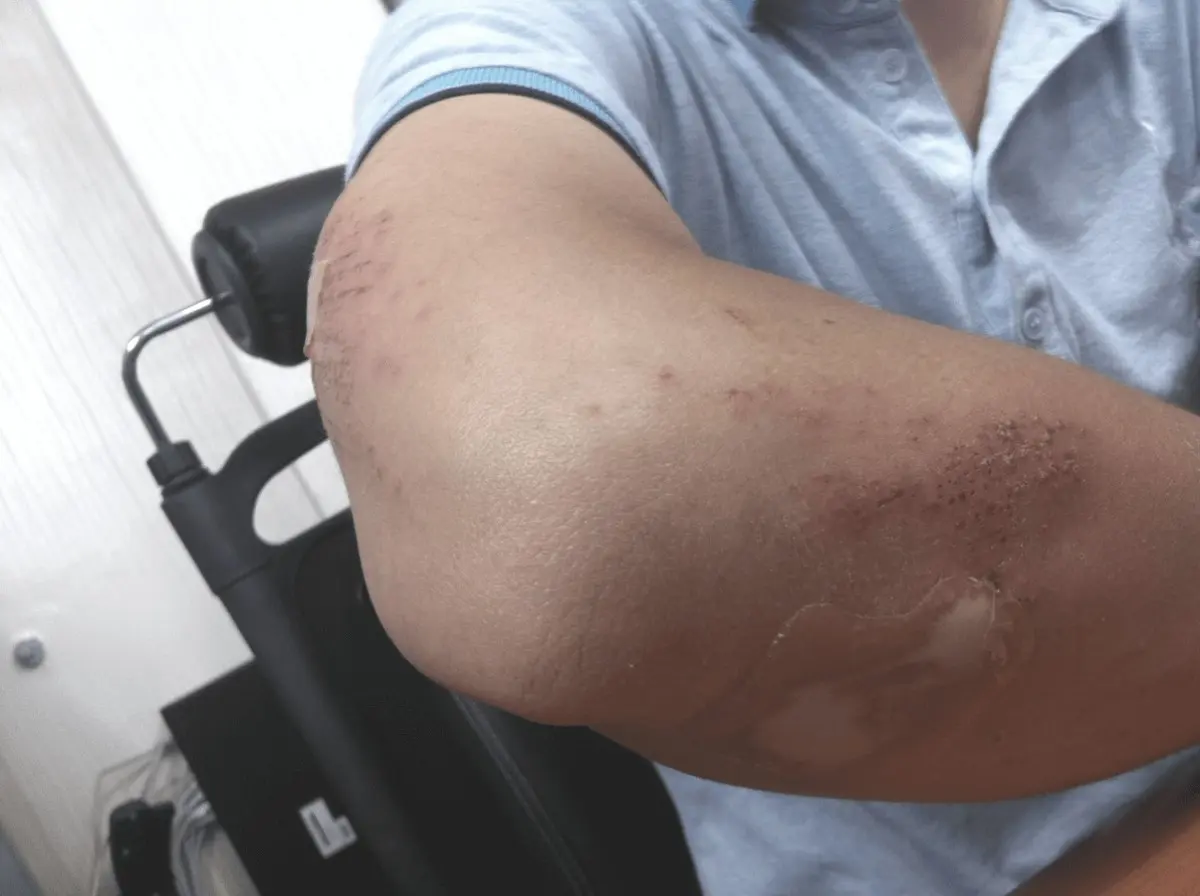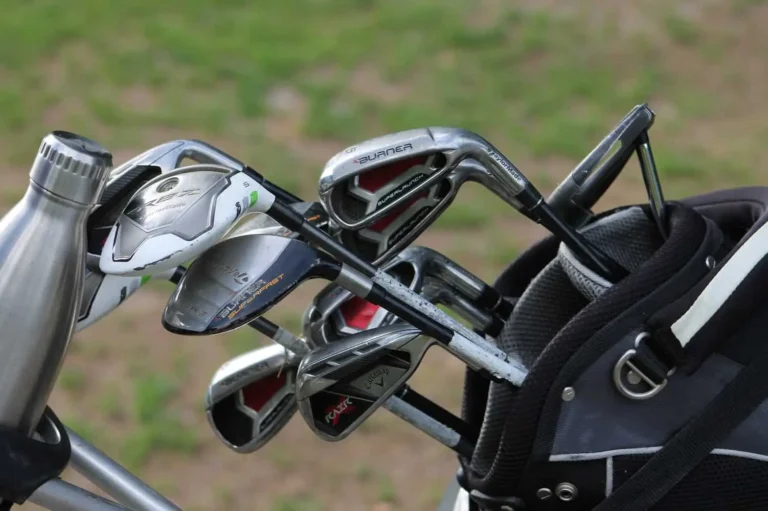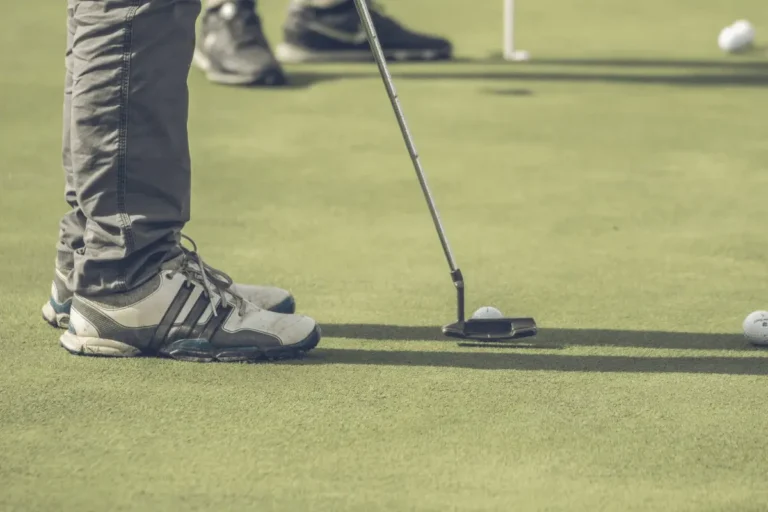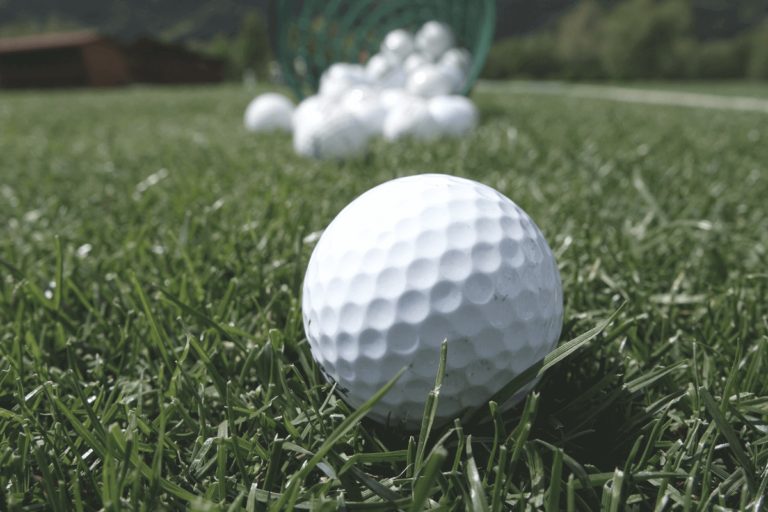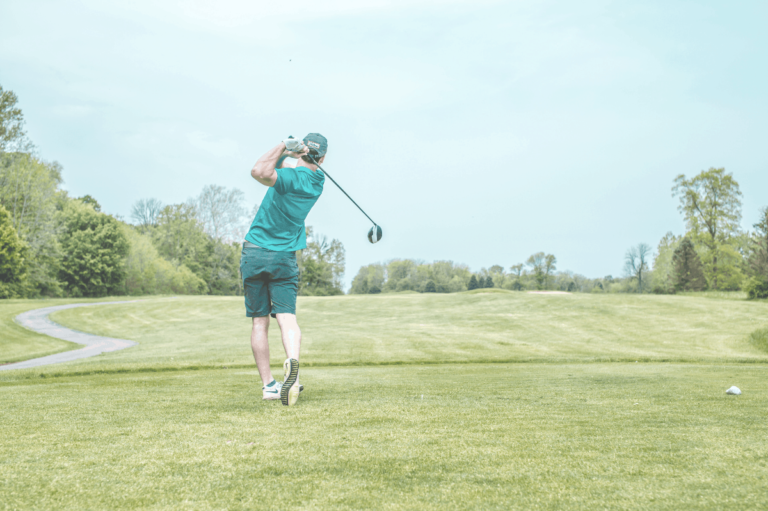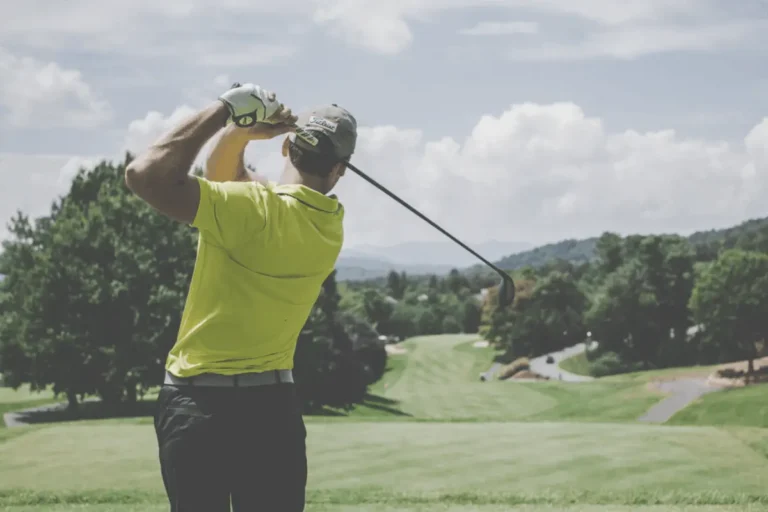Understanding Golfer’s Elbow and how to deal with it
When I’m playing the great courses of the world, I don’t want to deal with anything that could hurt my game. Golf time is my time!
I’ve been playing for a long time and I always thought that some injuries were unavoidable. That’s where I was wrong. With a little knowledge and prevention, you can keep yourself in tip-top shape.
By recognizing the symptoms of golfer’s elbow and taking appropriate steps, you can get back to your game.
In this article, I’ll cover how golfer’s elbow can be defeated. And go through some simple preventative methods so you can avoid the pain altogether. Remember, if you find yourself in discomfort after each swing, it’s important to speak with your physician or a sports medicine professional.
What Is Golfer’s Elbow?

Pain while you’re teeing off can screw up your game. Golfer’s elbow is not limited to golfers, of course, but anyone who makes repetitive movements with their arms. The muscles and tendons that connect your wrist to the inner elbow can become overstimulated.
If you feel a throb or a sting while you’re swinging the club you may have medial epicondylitis, aka golfer’s elbow.
Tendinosis
Any swelling of tendons, the fibrous tissues that connect muscles to bones, is tendinosis. This can be from inflammation or overuse, but also from gout and diabetes. It is different from tendinitis, which is inflammation due to sudden movement or trying to lift too much weight. Tendinosis does not include inflammation.
There are many kinds of tendinosis including:
- Tennis elbow
- Achilles tendonitis
- Jumper’s knee
And of course
- Golfer’s elbow
Golfer’s elbow is also known as tendinopathy, which is an umbrella term meaning injuries to the tendon or tendons.
Symptoms Associated With Golfer’s Elbow
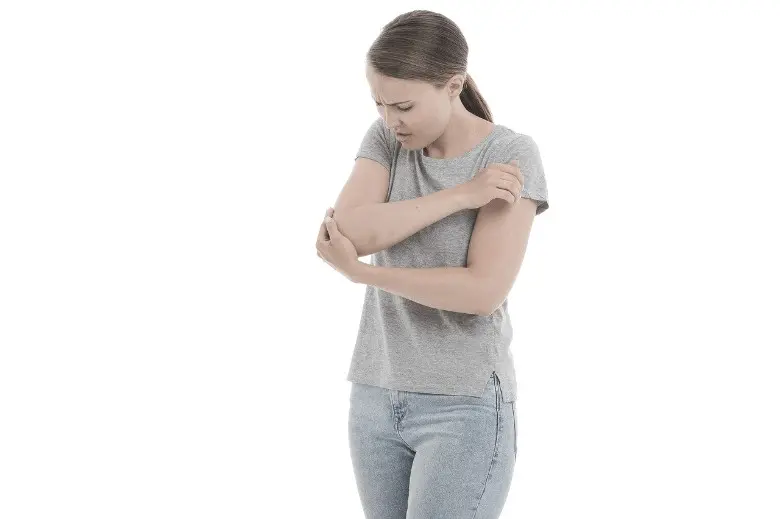
How do you know if the discomfort you’re feeling is golfer’s elbow or something else? There are a few key symptoms to watch out for.
Pain and Tenderness
Repetitive movements cause golfer’s elbow. If moving your elbow causes you a predictable pain every time you move it a certain way, you may be suffering from tendinosis. It may hurt to press the inner elbow or sting when you bend the joint.
Stiffness
After a long day of golf, I sometimes wake up stiff the next morning. This can be a normal reaction to exercise, but it can also indicate something more serious. Severe overuse of a muscle causes the tendons to shorten. You should take the time to warm up before you begin your exercise or repetitive movements for the day.
Weakness
This ongoing pain can begin to affect your strength. You may notice reduced ability to grip things or to lift heavy objects. You can build up the stability in your wrist and elbow once your pain is managed. Later in this article, I discuss exercises to stretch and improve your muscle tone.
Numbness or Tingling
Compromising tendons over time can cause nerve issues. Degradation of the tissue may result in a tingling sensation in your elbow joint or numbness in your forearm and fingers.
If you’ve lost feeling in your fingers or wrist, it is extremely important to see a doctor right away.
Golfer’s Elbow: Causes & Risk Factors
You’re more prone to developing golfer’s elbow if you carry the following risk factors:
- Age (the 40+ age group is the most affected)
- You are just beginning to exercise
- Perform exercises improperly
- Smoke
Make sure your golf clubs, tennis rackets, and sports equipment is the right size and weight for you. Slowly increase your load only after you have developed proper muscle strength.
You may also be at risk if you perform jobs with repetitive movements. If you sweep, chop, throw, or do other arm-based movements repetitively, you should try and change the method often. This way you will not exacerbate the muscles and tendons.
When to See a Doctor for Golfer’s Elbow
Maybe you’ve had a bit of time away from the course. Life just gets in the way! If you’ve had a long day on the greens (and maybe a little too much fun at the 19th hole), you might experience delayed onset muscle soreness DOMs. This is a common post-workout pain and doesn’t automatically warrant a trip to your GP.
Whether you knit, garden, or golf, you could set yourself up for soreness if you’re performing identical movements repetitively and with regularity. If you experience the same symptoms after performing repetitive tasks and the pain is chronic or lasts for many days, it’s important to see your doctor.
What You Can Do
If you’re visiting your doctor, make sure you take a list of:
- Your symptoms
- Key medical information
- Your typical daily activity
- Recent injuries
What Can Your Doctor Do?
After discussing your symptoms with your doctor, he or she can give you options for recovery. If the pain is due to injury, you may have different instructions than someone with a chronic ailment.
Medication
If your golfer’s elbow includes inflammation, you may be prescribed non-steroidal anti-inflammatory drugs (NSAIDs). These include ibuprofen and aspirin. A general pain reliever can help with most other symptoms. You might be asked to apply creams with pain relievers topically to the elbow and forearms.
Electrotherapy
How intense is your pain? You may benefit from transcutaneous electrical nerve stimulation (TENS). Your doctor applies electrical pulses which theoretically help the nerves stop interpreting pain signals. It may also help to heat deep into the muscles to allow the tendons to relax naturally.
Sports Massage
Many muscular injuries can be treated with massage. A sports massage expert often uses deep transverse friction massage (DTFM) to increase blood flow. There is little positive research indicating sports massage for tendinosis. However, the benefits can extend to your overall health as massage reduce stress levels.
Injections
A normal case of golfer’s elbow is no reason to have an injection. Rest and recuperation are the best medicine. However, if the pain is chronic or inflamed you may need additional treatment. Steroids or other injections may ease discomfort and aid healing. These should only be used as a last resort after physical therapy and medication.
How to Deal With Golfer’s Elbow
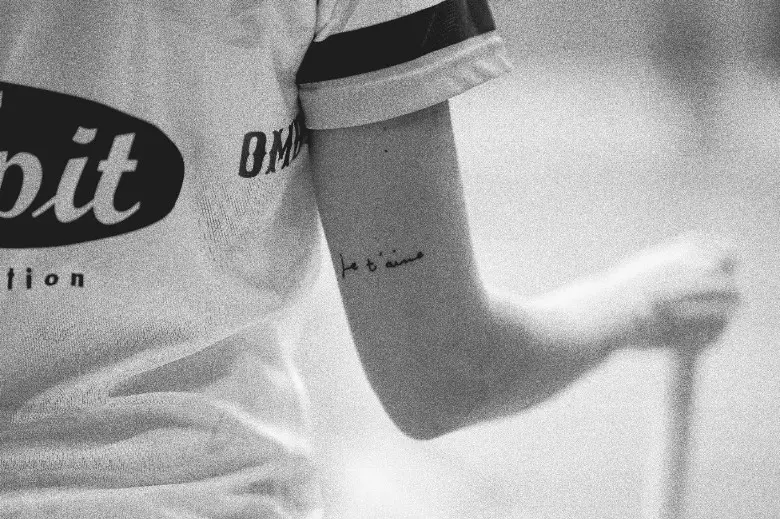
If you want to get back to hitting birdies, there are a few things to do.
Diagnosis
It’s normal to have slight pain or stiffness the day after working out. There are simple steps to take to help relieve the pain associated with a mild case of golfers elbow. But if you experience pain for more than a few days, consult a doctor for a proper diagnosis like platelet rich plasma or stem cell treatment as experts.
Home Treatments for Golfer’s Elbow
Mild cases of golfer’s elbow can be dealt with at home first. The best home treatment is the R.I.C.E. method. This stands for:
- Rest
- Ice
- Compression
- Elevation
Take some time for yourself and relax! Steal a bag of peas from the freezer and cool your elbow and forearm for 20 minutes. Always keep a cloth between the ice pack and your skin.
Once you’re done, wrap the joint with an elastic bandage. Elevate it and relax. Over the next few days, try not to put too much strain on your arm.
When you’re feeling better, stretches and strengthening exercises are the perfect way to boost your golf muscles and keep you in top form. Here are a few of my favorites.
Stretching Exercises
Use these stretches to help warm up your muscles. By preventing injury, you can avoid golfer’s elbow in the first place.
Wrist Extensor Stretch
Reach your arm in front of you, palm up. Bending at the wrist, use your opposite hands to grasp the fingers. Hold this stretch for up to 30 seconds.
Forearm Extensor Stretch
Hold your arm in a 90-degree position, with the upper arm along your side and the forearm parallel with the floor. Make a fist and bend the elbow until the arm is straight along the body. Hold for 15-30 seconds and repeat.
Wrist Flexor Stretch
With your arm parallel to the floor, hold your palm down. Gently bend the wrist with your opposite hand and hold for up to 30 seconds.
Neck Stretch to the Side
Stand straight and square your shoulders. Lengthen your spine and reach for the sky with the top of your head. Turn your chin to the right until you feel a stretch. Hold it for 15-30 seconds. Release the stretch and return your head to its neutral position. Repeat on the other side.
Strengthening Exercises
In addition to stretches, you can build up the muscles in the elbow. By doing these simple exercises you can get back to your favorite holes fast.
Wrist Curls
This exercise can be performed with a small hand weight. If you’re just starting, feel free to try it without weights.
Place your forearm palm side up on a support such as a counter or the arm of a chair. Grip the weight and allow your hand to hang. Slowly bring the weight up and down by bending your wrist. Repeat about ten times, doing more as you build up strength.
Resisted Wrist Extension
This exercise is also referred to as the Cozen test. It’s an exercise physical therapists often prescribe if they suspect golfer’s elbow.
Using an elastic exercise band, you stretch the muscles of the forearms. Sit in a chair and place the resistance band under your foot. Place your forearm on your leg, palm down. Allow the hand to hang over your knee and hold the band. Flex your wrist up and down. If there is pain, it indicates golfer’s elbow.
Resisted Wrist Flexion
This exercise is performed much like the previous activity. Sit in the same manner with the exercise band under your foot. Hold the forearm palm up this time and grip the elastic. Flex the wrist up and down. Repeat 10-15 times.
Resisted Forearm Pronation
In this exercise, you will be twisting the forearm from the elbow. Sit palm up as before. Rotate your arm from the elbow towards your body, noticing if there is any pain. Once you can perform this 10-15 times, begin adding resistance with a strap.
Resisted Forearm Supination
Once you have completed the above exercise, adjust your resistance band. Rotate the forearm again, this time away from the body.
Ball Squeezes
You can do ball squeezes anywhere! Simply find a ball or flexible object. When you first begin, look for a very soft item. As you increase your fine muscle tone, you can graduate to harder balls.
Hold the ball in your hand and support your elbow on a table or chair arm. With the palm down, squeeze the ball. Only use as much force as comfortable. Repeat the exercise 10-15 times. Once you have finished, flip your arm so you’re holding the ball palm side up and repeat the motions.
If there is pain performing any of these exercises, visit your doctor or sports medicine professional. You may have golfers elbow. The doctor can give you advice for easing the symptoms. They can also recommend more exercises to help you build strength in your elbow tendons, muscles, and joints.
When You Return to Full Fitness
Once your pain is reduced, you can return to your normal activities. If you suspect that your golf swing is the culprit, it’s worth the time and expense to have a professional coach assess your technique.
If there’s an error in your performance, it may be the underlying cause of your golfer’s elbow. Take care not to exacerbate your injured arm until you have built up your strength.
Surgery
In rare cases, golfer’s elbow may require surgery. If the pain lasts for more than a week you should see a doctor right away. Doctors try to exhaust all other treatment options before surgery.
If surgery is unavoidable, your doctor will remove the damaged areas of the elbow’s tendon and repair any tears. In an outpatient procedure, more than 85 percent of participants felt pain relief within 6 months.
Prevention
To avoid golfer’s elbow completely, prevention is the best medicine. Warm your muscles before exercise and use the stretching exercises listed above to build strength.
Getting yourself ready for the game is easy! If you’re a serious golfer, consider having a professional assess your swing. If you’re getting older, look into graphite clubs. Some of these new styles weigh less than half of the older models. This decreased weight could help you prevent injuries like golfer’s elbow.
Back to the Green

When you’re going for 18 holes, there’s no time for pain. Don’t let the game get the best of you. If you don’t want to spend the next few months avoiding the fairway, take my advice: warm-up before you play.
If you still find yourself ending your game in pain, check with your golf club’s doctor or your own GP.
By taking some simple precautions it’s easy to avoid golfer’s elbow. Get back to hitting eagles and having a great time on your favorite course.

